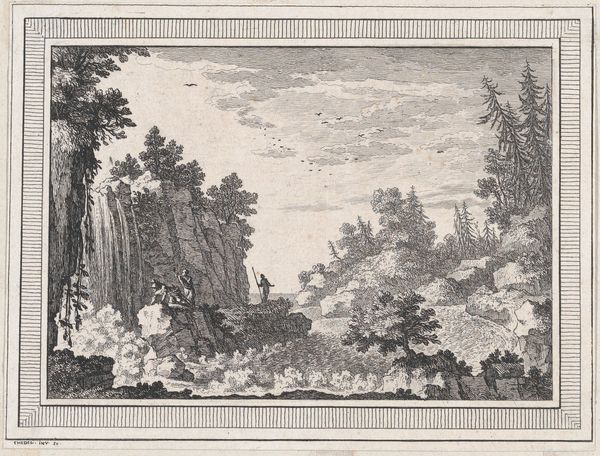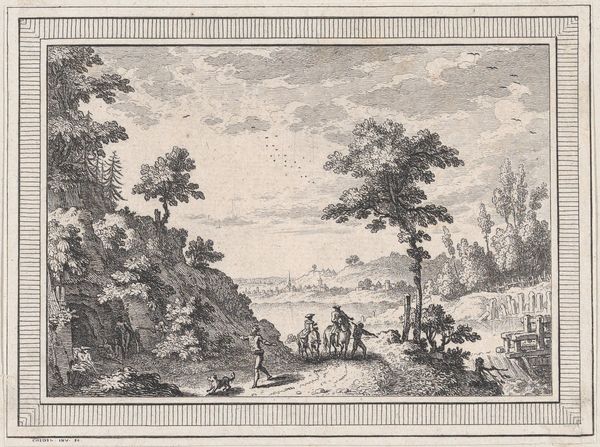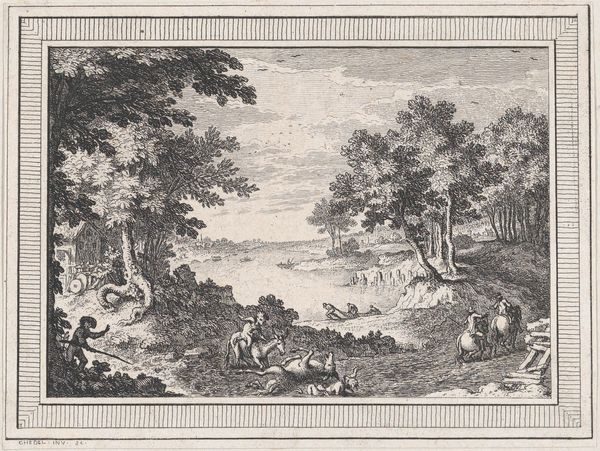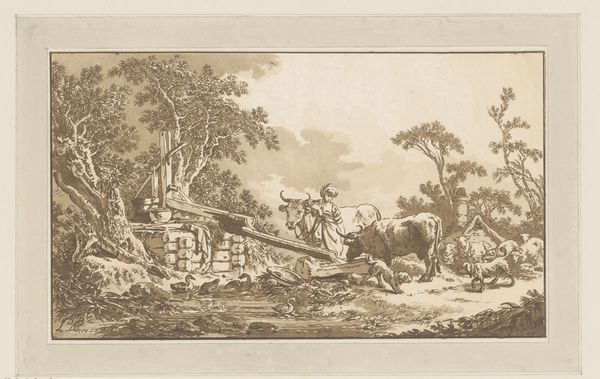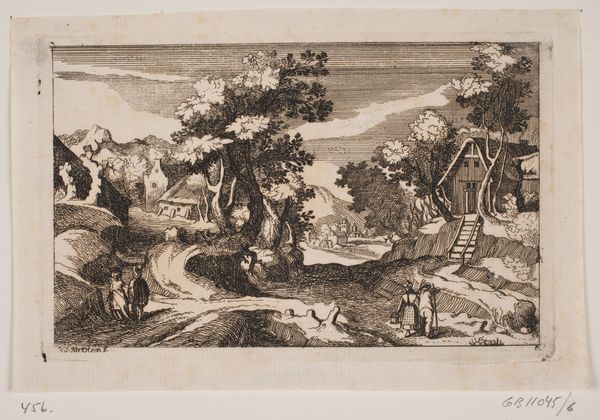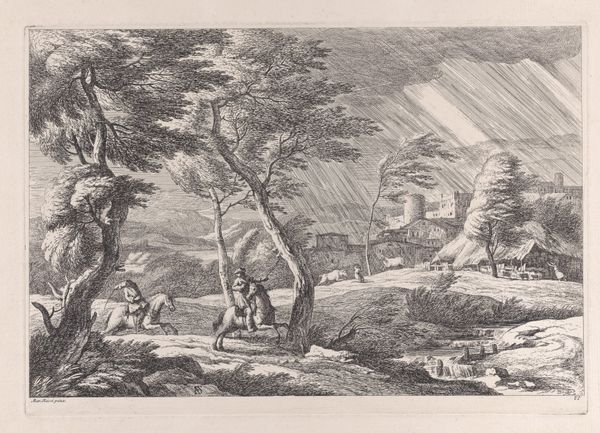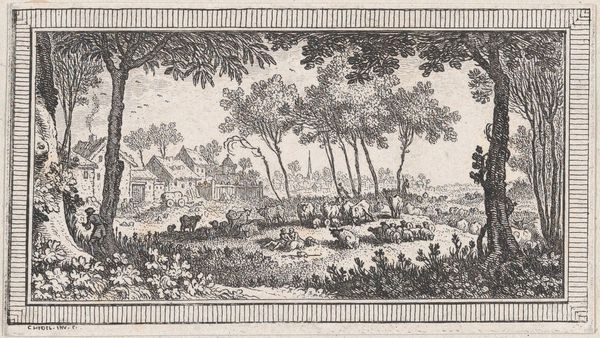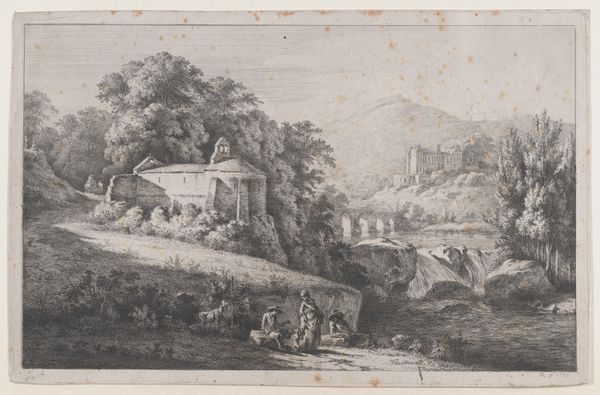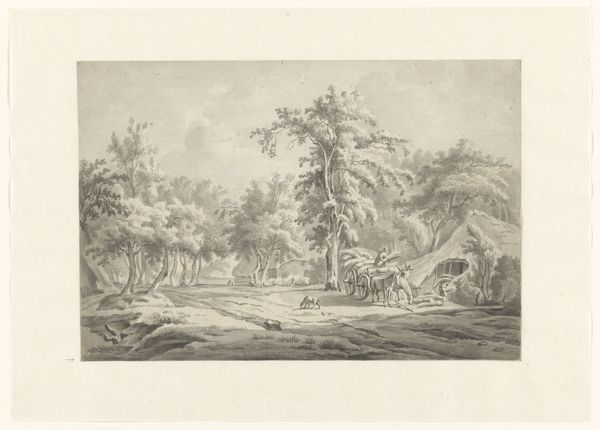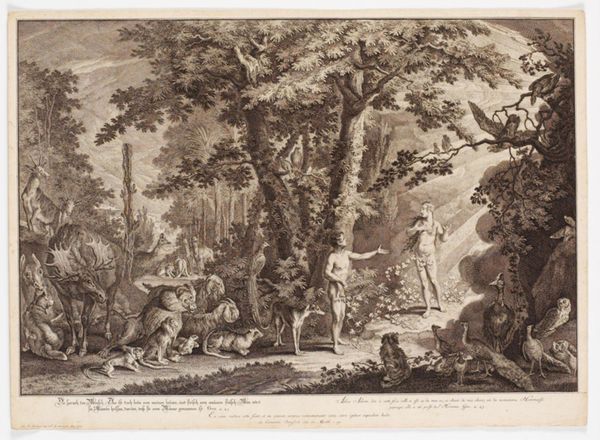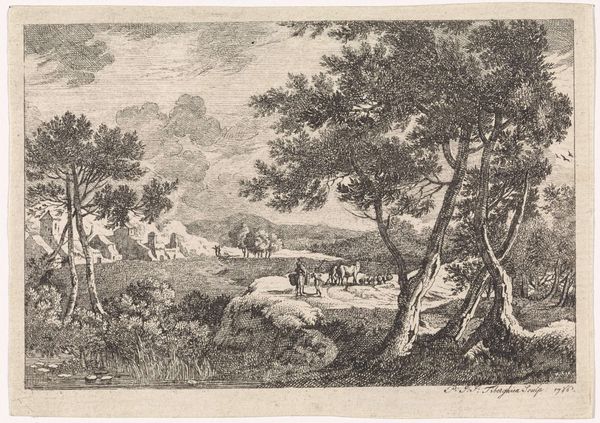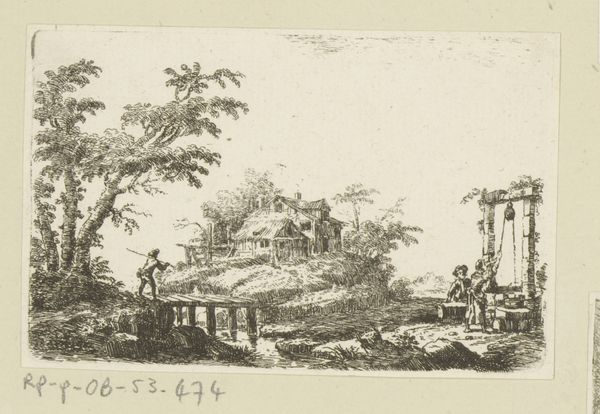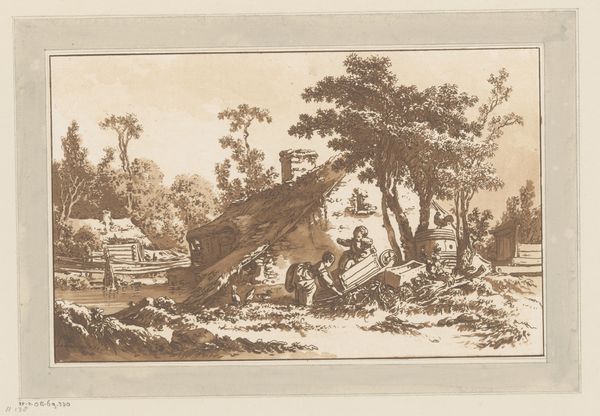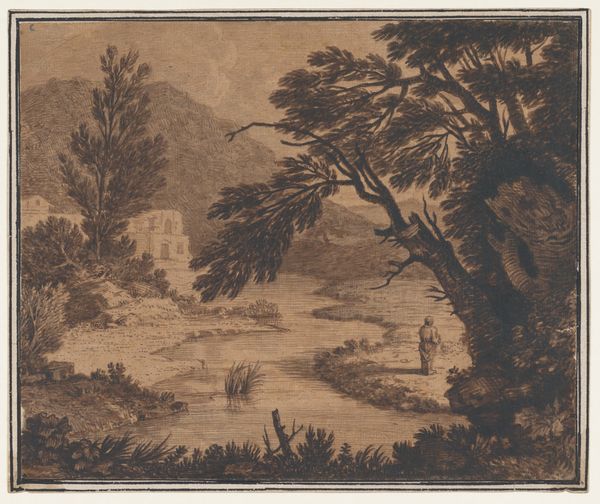
Landscape, from a series of six landscapes dedicated to Madame La Marquise de Pompadour 1720 - 1762
0:00
0:00
drawing, print, engraving
#
drawing
#
baroque
# print
#
landscape
#
engraving
Dimensions: Sheet (trimmed): 4 3/16 × 5 9/16 in. (10.7 × 14.2 cm)
Copyright: Public Domain
Curator: Looking at this engraving by Quentin Pierre Chedel, made between 1720 and 1762, titled “Landscape, from a series of six landscapes dedicated to Madame La Marquise de Pompadour,” I'm struck by its theatrical, almost operatic feel. What’s your first impression? Editor: The first thing I see is labor, quite literally. People hauling nets, struggling, contrasted against this idyllic, almost fabricated scene. The very texture, rendered meticulously through engraving, screams process and time. What was involved in the print-making? Curator: Engraving involves meticulous work on a metal plate, with tools determining the precise lines, hatching and cross-hatching of this printed image. As for labor, I see echoes of classical pastoral scenes—but layered with the courtly context hinted at by the title. Look at the symbols! Editor: You think so? To me the materials whisper something about consumption. Who was this print designed for, and how would its distribution influence interpretations? Was it purely decorative, or was there an attempt to naturalize class structure? Curator: Intriguing point. The intended audience surely included nobility, like Madame de Pompadour herself. However, the symbols also operate on another plane. The figures drawing the net remind us of allegorical images, possibly reflecting virtues, even political commentary cloaked in the garb of leisure. The very inclusion of what looks like labor, but certainly beautified, hints at themes such as "riches acquired." Editor: Absolutely. We also should consider the conditions of artistic production. Chedel wasn't creating in a vacuum, and these landscapes undoubtedly reference earlier models. How are those traditional structures and ideas both honored and undermined through the creation of this "print," with all the material realities that implies? Curator: Incredibly insightful, the social context certainly informs its imagery. As the eye wanders toward the water, the rocks almost start taking on the appearance of ruins, evoking ideas about fleeting time and vanity of worldly endeavors, a baroque meditation that speaks to universal themes, while still flattering the Marqueise de Pompadour! Editor: Ultimately, it all seems very balanced in composition, despite the human energy to the bottom left; there’s something undeniably consumable about its entire arrangement as a print that begs analysis. This image tells us stories beyond just art; it whispers truths about commerce and work!
Comments
No comments
Be the first to comment and join the conversation on the ultimate creative platform.
